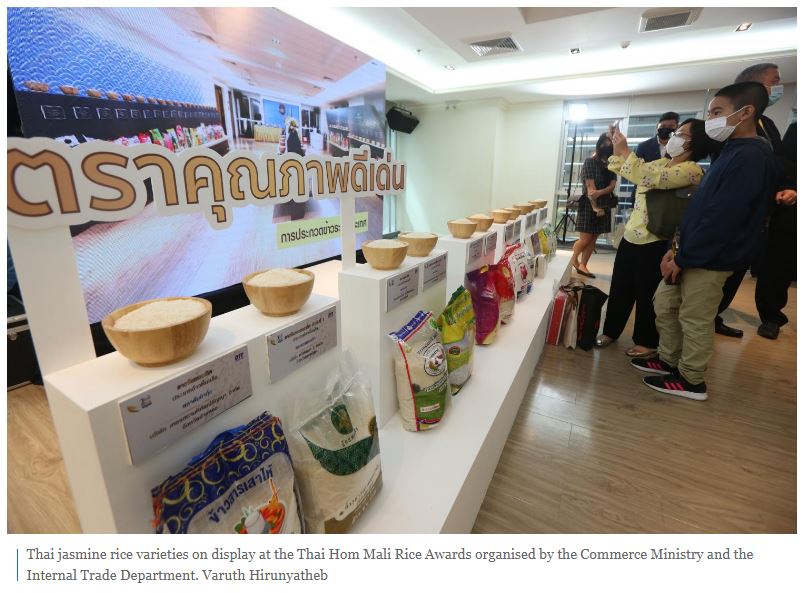Thailand: Rice strategy awaiting rejig
Commerce Minister Jurin Laksanawisit pledges to speed up adjustment of the Thai rice strategy as quickly as possible as the industry faces a slew of challenges including a strong baht and rising production costs.
Mr Jurin said after presiding over a Thai hom mali fragrant rice fair on Wednesday that rice exports have fared poorly since the beginning of last year because of foreign exchange swings and the ascendant baht, making Thai rice more expensive than competing grains.
“The ministry is pursuing a rice strategy to improve competitiveness, covering all systems including marketing, cultivation and R&D of new rice varieties,” Mr Jurin said. “We are also working to find ways to reduce production costs for farmers, to make Thai rice more affordable.”
He said the ministry is promoting seven rice products and seed development as part of a marketing-led production strategy for 2020-24 recently announced by the ministry.
The four-year strategic plan will focus on Thai hom mali rice, Thai fragrant rice, soft-textured white rice, hard-textured white rice, parboiled rice, glutinous rice and specialty rice.
The rice market will also be divided into three categories: Thai hom mali and fragrant rice for the premium market; soft-textured white rice, hard-textured white rice and parboiled rice for the mass market; and glutinous rice and specialty-quality rice for the specialty market.
Mr Jurin said the Commerce Ministry will work closely with the Thai Rice Exporters Association to seek new trade partners to expand the export market, as Thai rice remains in strong demand globally given its quality.
He confirmed that the strong baht and the coronavirus pandemic are the main obstacles for rice exports this year.
Mr Jurin has already ordered commercial ambassadors in various countries to accelerate seeking new markets and promote Thai rice to reach more consumers in overseas markets.
Charoen Laothammatas, president of the Thai Rice Exporters Association, said rice export prospects look gloomy due to the stronger baht and higher prices.
The free-on-board (FOB) price of Thai white rice 5% is now quoted at US$460 a tonne, while Indian white rice stands at $370 a tonne, leading importers to buy more Indian rice, Mr Charoen said.
He urged the government to speed up finding ways to reduce logistics costs, including transport costs.
The association recently lowered its rice export forecast for 2020 to 6.5 million tonnes, the lowest in 20 years, from an earlier forecast of 7.5 million, citing a host of headwinds, including the virus crisis that weakened global demand, a strong baht making Thai rice more expensive and continued drought cutting into production.
Source: https://www.bangkokpost.com/business/1963447/rice-strategy-awaiting-rejig


 Thailand
Thailand




